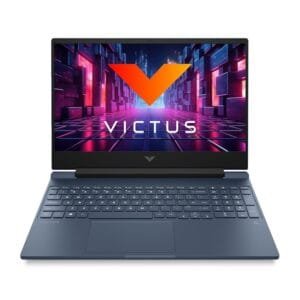Those companies are still bound to benefit from AI demand. But their stocks are starting to flatten out or fall, a sign investors have begun to look elsewhere. The stocks of a new group of firms have lately been surging and could take a more central role as the AI race takes shape. They include companies not usually associated with electricity generation, including construction giant Caterpillar; engine maker Cummins; oil services firms Baker Hughes, Liberty Energy, and ProPetro Holding; and alternative-energy company Bloom Energy.
The shift is being driven by two main factors: a need for speed and a change in the politics of electricity.
The speed angle is self-evident. Tech companies need to get their data centers plugged in today, or risk being stuck with expensive Nvidia chips that aren’t connected to electricity. The biggest challenge for Microsoft now is getting access to electricity, said CEO Satya Nadella on a recent podcast. “It’s the ability to get the builds done fast enough, close to power. If you can’t do that, you may actually have a bunch of chips sitting in inventory that I can’t plug in. In fact, that is my problem today.”
At the same time, politicians in both parties have become hypersensitive to electricity inflation, which played a role in this month’s election wins by Democrats in New Jersey, Virginia, and Georgia, and looms large before next year’s midterm congressional races. In some states, data centers have been blamed for causing electricity prices to rise, because utilities need to spend money on building transmission lines and power plants to serve them. One way to alleviate that concern is for data centers to rely less on the normal electricity grid to power their sites. U.S. Energy Secretary Chris Wright, for instance, has proposed that data-center projects that can arrange for their own on-site power sources should get fast-tracked.
Such a policy—and the need for speed—plays into the hands of companies like Caterpillar, Baker Hughes, and Cummins, all of which make engines or turbines that have historically been used in other business lines. Caterpillar’s natural-gas turbines and specialized engines are used in areas like energy to pump fuels through pipelines, for instance. But they can also be repurposed to provide electricity for data centers.
Unlike big turbines made by companies like GE Vernova that can generate over 500 megawatts of power, Caterpillar’s most powerful units have 39 megawatts of capacity, and they are considered much less efficient than the state-of-the-art turbines made by bigger players. But with big turbines on back order for years, data-center players will take whatever they can get their hands on. The repurposed gear can be trucked quickly to data centers and rigged up on site.
Meta Platforms chose to use Caterpillar’s turbines at an Ohio data center that will be built so that it can operate off the electricity grid. Stargate, the massive data center project backed by OpenAI, is also using Caterpillar turbines at its Texas facility. Cummins, known for making engines for trucks and heavy machinery, is now supplying them to Digital Realty, the world’s largest data-center provider.
Caterpillar announced at its investor day on Nov. 4 that it’s doubling its production of engines and increasing its capacity to build gas turbines by 2.5 times by 2030. J.P. Morgan analyst Tami Zakaria wrote last month that Caterpillar’s power business could add at least $10 to its annual earnings per share in the next three years. Caterpillar earned $21.92 per share in 2024. Zakaria sees the stock rising to $730 from a recent $576.
Oil services companies have also been unlikely winners from this trend. Both Liberty Energy and ProPetro, best known for their expertise in hydraulic fracturing, or fracking, have jumped headlong into the data- center game. They have access to turbines through their oil businesses and are planning to use them to serve tech companies. Before this, their stocks were in the dumps because of a slowdown in oil drilling. But in recent weeks, they have started inking data-center deals, and the stocks are flying.
Similar dynamics have helped Bloom Energy, which makes fuel cells that work like batteries. They can provide on-site power for all sorts of users, from data centers to industrial sites. Bloom has made deals with companies such as Oracle to deploy its fuel cells, and the stock has quintupled this year. Companies that need power quickly can simply buy Bloom’s fuel cells, which are about the size of large refrigerators, instead of waiting for permission to connect to the grid. “We are entering the age of BYOP—bring your own power,” said KR Sridhar, CEO of Bloom Energy, on the company’s earnings call. “We love this proposition.”
Enthusiasm for these new stocks has drawn attention away from some of the old winners, like GE Vernova and Vistra. Both are down by double-digits over the past month. In GE Vernova’s case, investors should consider the dip an opportunity, writes J.P. Morgan analyst Mark Strouse.
Similarly, Angie Storozynski, an analyst at Seaport Research Partners, has Buy ratings on Constellation, Vistra, and Talen, despite her concerns that they haven’t signed enough data-center deals lately. She thinks those companies still have advantages in the data-center race because they’re proven operators of baseload generation. But she expects that their advantages will erode with time. “It will not last forever,” she says. “I’m trying to be patient.”
The data-center race has entered a new stage. The clock is ticking.
Write to Avi Salzman at avi.salzman@barrons.com



